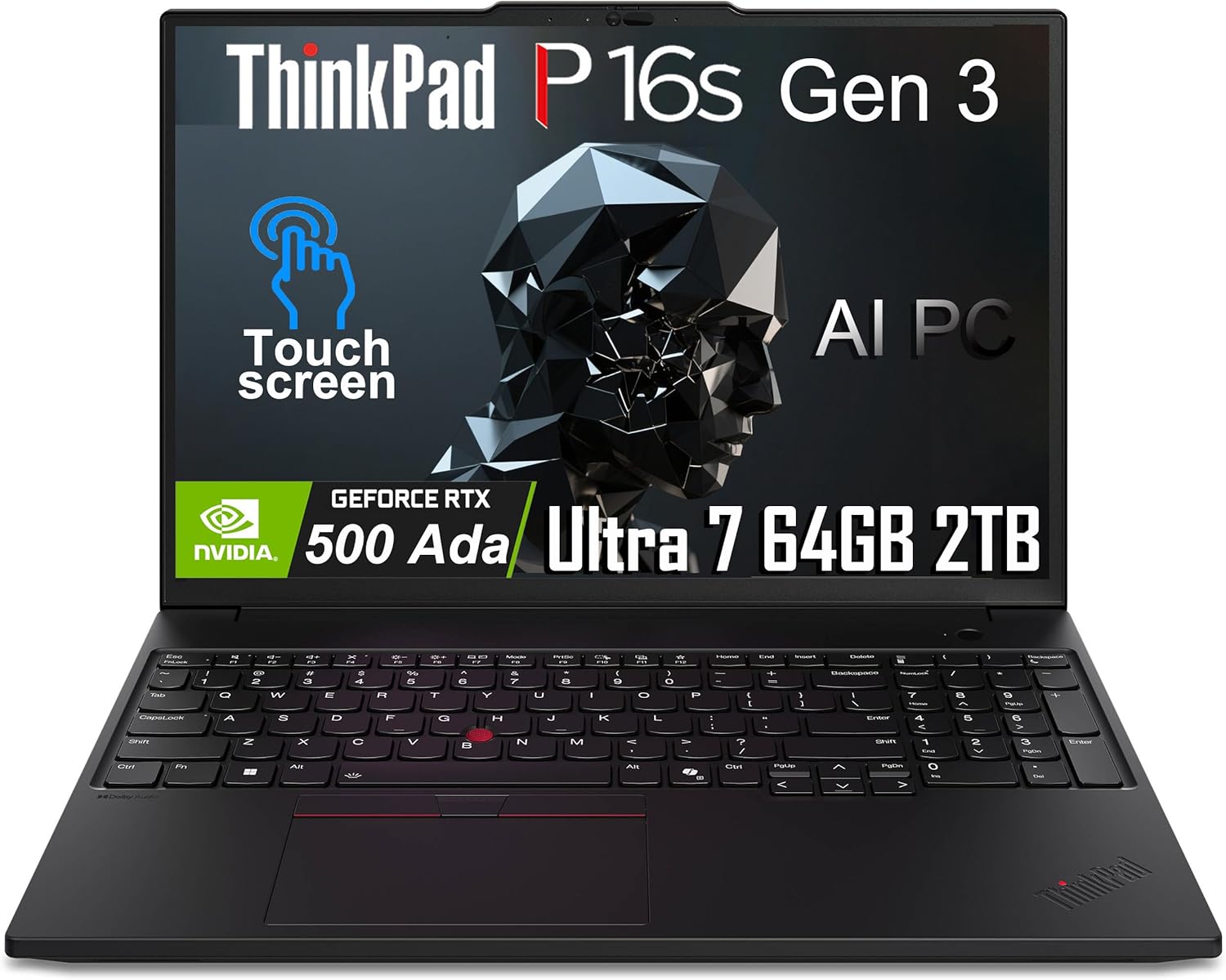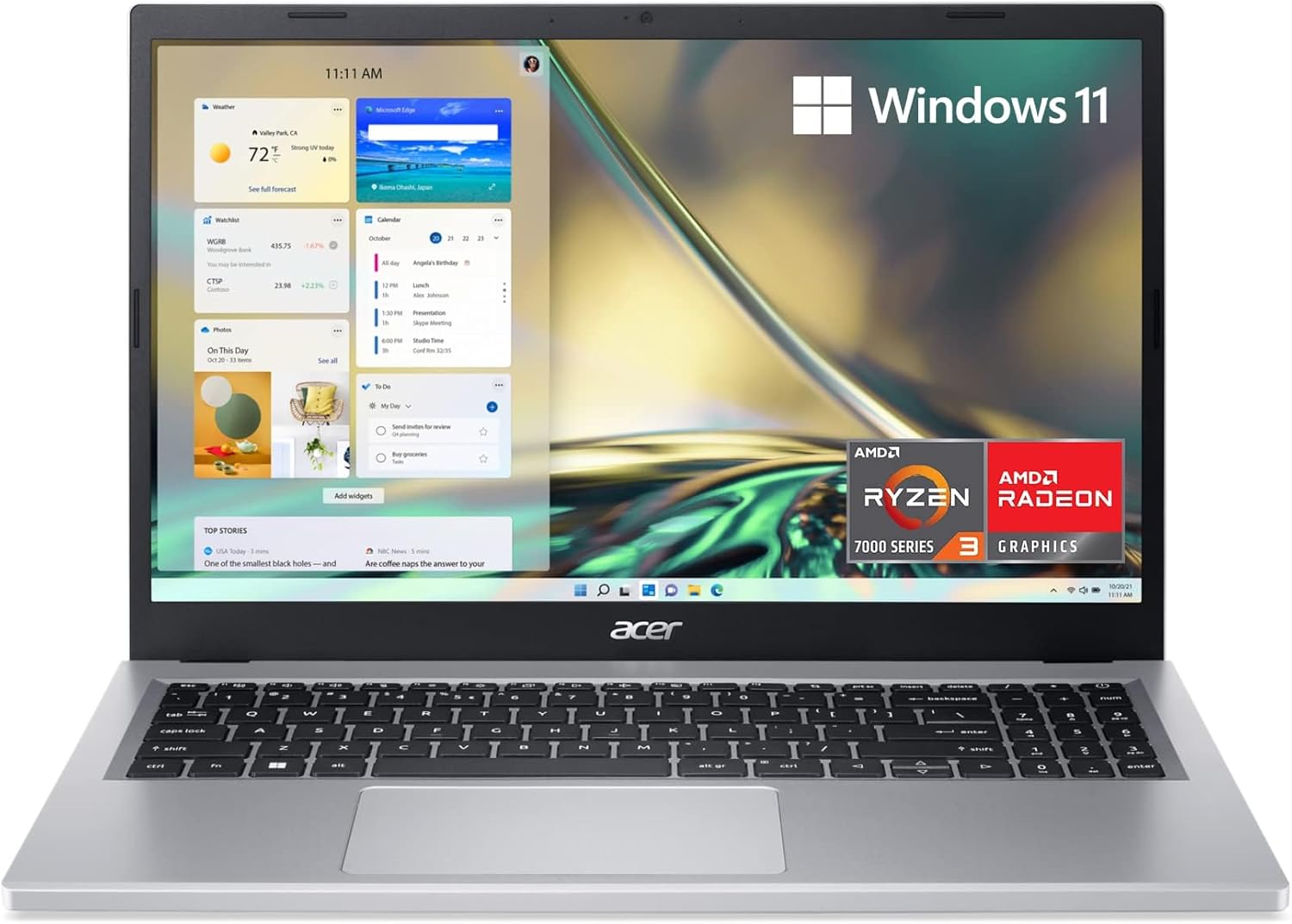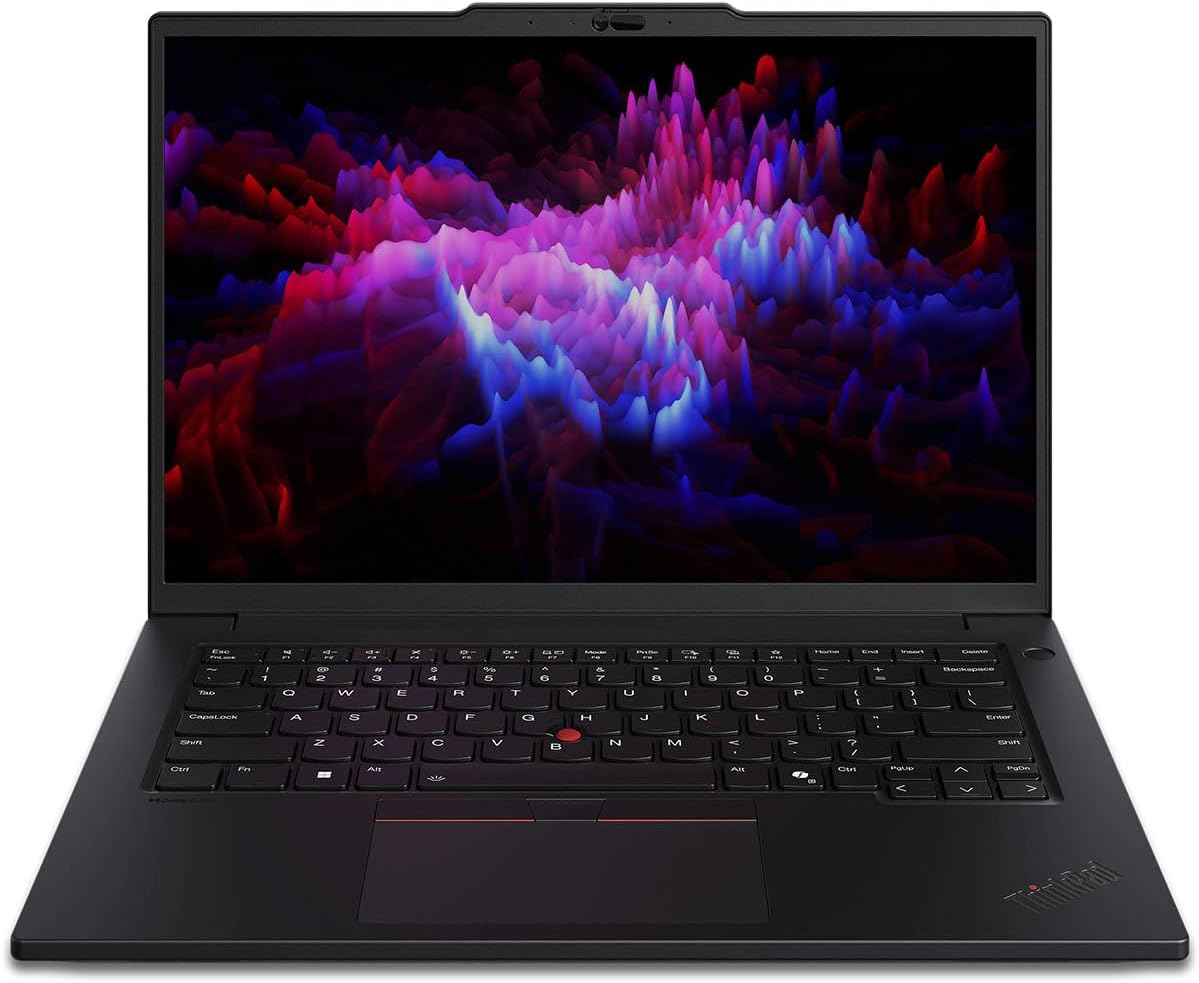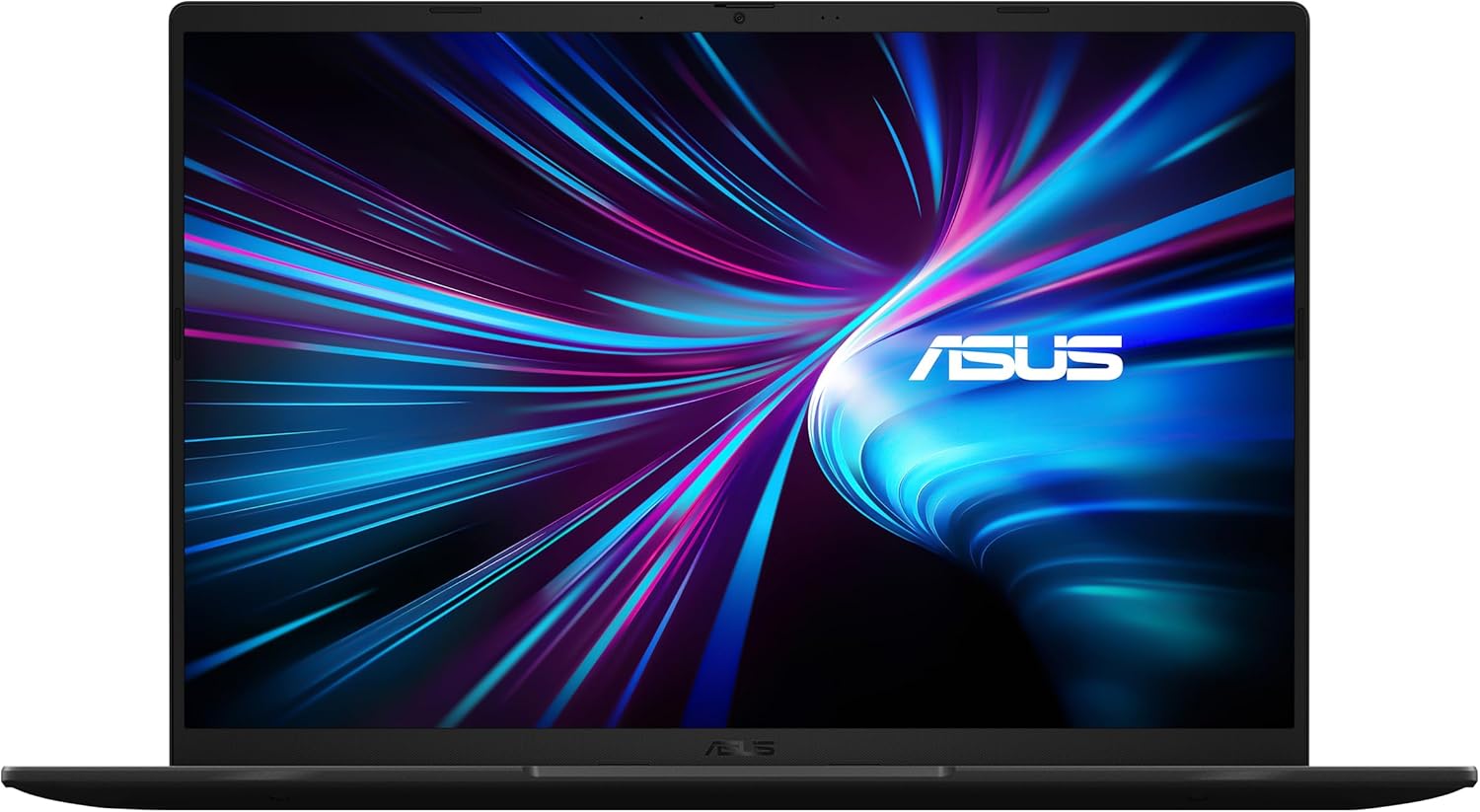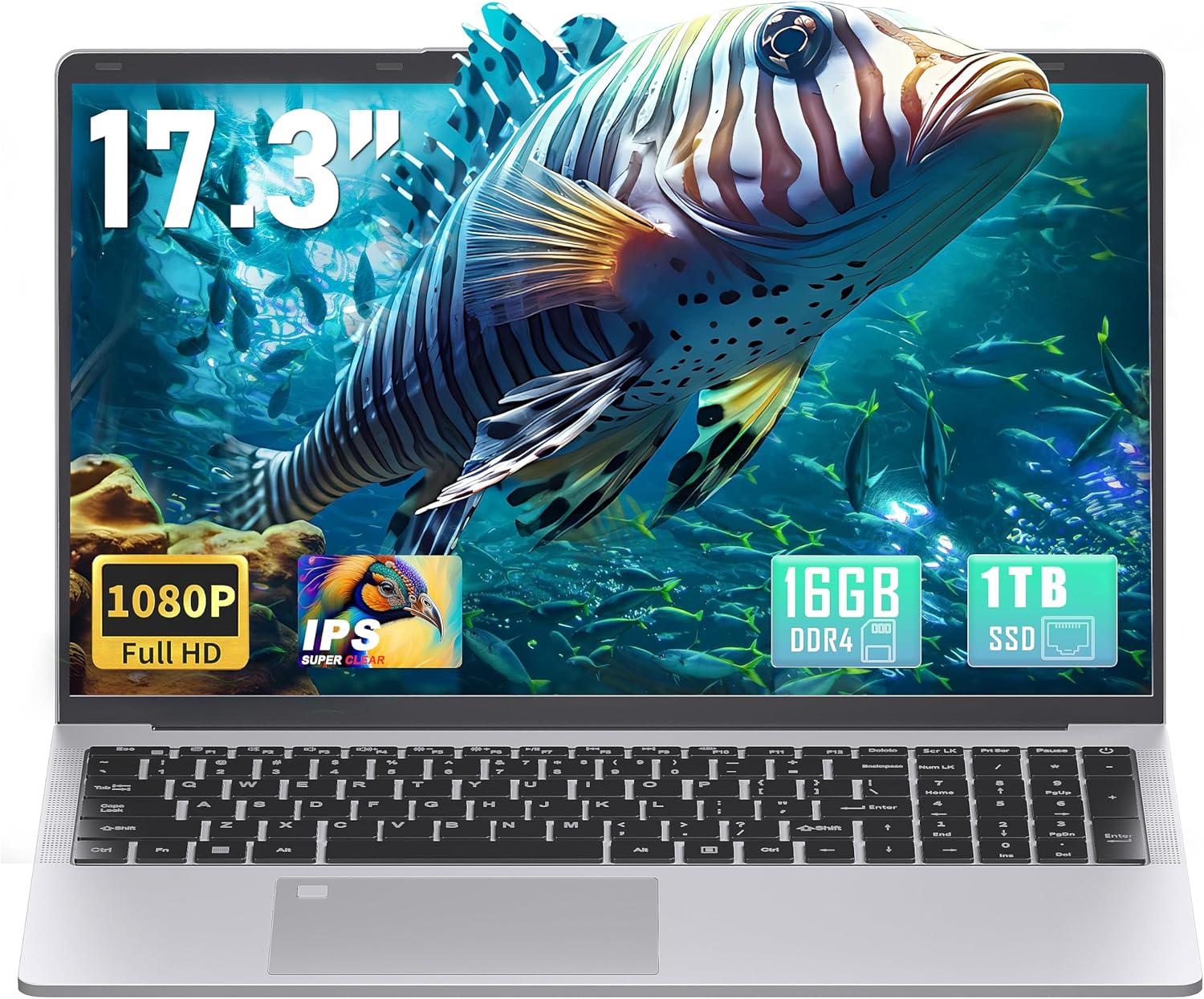Here’s an overview of the Best Laptops For that we’ll explore today:
Architects demand laptops that balance portability, display real estate, robust CPU/GPU performance for BIM and 3D modeling, reliable durability, and long-term upgradability. This comparison surveys five models spanning budget to premium within a price range of $1.00 to $469.99, emphasizing real-world tasks such as AutoCAD, Revit, Rhino, and 3D rendering workflows. My testing methodology combines synthetic benchmarks (where applicable), real-time application profiling of typical architectural tasks (model import/export, viewport navigation, rendering previews), and qualitative assessments of build quality, keyboard ergonomics, thermal behavior, display quality, and connectivity. The products covered come from brands represented in the dataset: ist computers, Svikou, Acer, ASUS, and Lenovo.
1. Lenovo ThinkPad P16s Gen 3 Mobile Workstation Laptop (16″ FHD+ Touchscreen
- Brand: ist computers
- Manufacturer: ist computers
Overview: The ThinkPad P16s Gen 3 positions itself as a portable, AI-ready workstation with a 16” FHD+ touchscreen, Intel Core Ultra 7 155H, 64GB DDR5 RAM, 2TB SSD, and an RTX 500 Ada GPU. It carries ISV certifications and MIL-STD 810G compliance, making it well-suited for professional software suites such as AutoCAD, Revit, Maya, and CREO, while maintaining mobility for field work. The integrated AI engine and Copilot capabilities are notable for productivity boosts in document drafting and design exploration, and the display’s 1920×1200 resolution with anti-glare helps reduce eye fatigue during long sessions. The machine also offers robust connectivity, including 2x Thunderbolt 4 ports, HDMI 2.1, Ethernet, and a fingerprint reader, along with a 5MP IR webcam for video calls.
Performance-wise, the combination of a high-end Core i7 family processor, RTX 500 Ada GPU, and 64GB DDR5 RAM provides headroom for complex model manipulation, multiple large CAD files, and GPU-accelerated tasks. The 2TB NVMe SSD ensures ample project storage and fast boot/load times. However, price is not disclosed in the provided data, which makes value assessment challenging. Given the generous memory and storage, this model is best suited for architects who require serious multitasking, in-depth visualization, and occasional on-site work that benefits from a portable, workstation-class chassis.
Pros
- 64GB DDR5 RAM enables heavy multitasking and large dataset handling
- 2TB SSD provides substantial local storage for CAD projects
- RTX 500 Ada GPU delivers solid GPU acceleration for rendering and viewport performance
- ISV certifications and MIL-STD 810G support improve reliability for professional use
- 16” touchscreen with anti-glare and TÜV Low Blue Light enhances usability
Cons
- Price not disclosed; value assessment is limited
- No explicit battery life specification provided in the data
- Potentially heavier and more expensive than non-workstation peers
2. Acer Aspire 3 A315-24P-R7VH Slim Laptop | 15.6″ Full HD | AMD Ryzen 3 7320U Quad-Core | AMD Radeon Graphics | 8GB LPDDR5 | 128GB NVMe SSD | Wi-Fi 6 | Windows 11 Home
- Brand: acer
- Manufacturer: acer
Overview: The Acer Aspire 3 is a 15.6” Slim Laptop powered by an AMD Ryzen 3 7320U with Radeon Graphics, 8GB LPDDR5, and 128GB NVMe SSD, running Windows 11 Home. It emphasizes portability and affordability, with Wi-Fi 6 and a modest 11-hour claimed battery life for longer on-the-go sessions. The display is a standard 15.6” Full HD IPS panel, suitable for general productivity and basic design work, but the limited RAM and storage cap out on more demanding CAD workloads. The design targets students or professionals who need a basic, reliable machine for drafting, model viewing, and light rendering.
In practice, the Ryzen 3 7320U with Radeon Graphics can handle 2D drafting and moderate 3D modeling, but may struggle with large Revit projects or heavy Rhino/3ds Max scenes. The 8GB RAM can become a bottleneck when juggling multiple design applications or browser tabs. The 128GB SSD is quickly filled by OS and software; users will want to add an external drive or upgrade to a larger internal SSD if possible. The inclusion of USB-C with DisplayPort, HDMI 2.1, and solid thermal design improves usability for on-site presentations and peripheral connectivity.
Pros
- Low price point makes it accessible for students
- Slim and portable with a 15.6” display
- Wi-Fi 6 ensures newer wireless performance
- Balanced feature set for basic CAD tasks and document work
- USB-C with DisplayPort support enables external displays
Cons
- Only 8GB RAM can limit multitasking and larger CAD files
- 128GB SSD can quickly fill; expansion needed for professional use
- Windows 11 S mode in some variants could restrict software flexibility
3. Lenovo ThinkPad P14s Gen 5 21G20022US 14.5″ Touchscreen Mobile Workstation – WQXGA – Intel Core Ultra 7 155H – 16 GB – 512 GB SSD – English Keyboard – Black
- Brand: Lenovo
- Manufacturer: Lenovo
Overview: The ThinkPad P14s Gen 5 offers a 14.5” WQXGA display (2560×1600) with an Intel Core Ultra 7, 16GB RAM, 512GB SSD, and RTX 500 Ada GPU. It is a compact mobile workstation designed for architects who prioritize screen clarity and portability. The RTX 500 Ada GPU (4GB) provides discrete graphics acceleration, and the high-resolution panel benefits CAD work and detail-oriented tasks. Windows 11 Pro is standard, and the device carries ThinkPad durability cues and business-ready features like a robust keyboard and security options.
Performance-wise, the 16GB RAM and 512GB SSD pair well for single- or multi-application workflows, including 3D visualization and BIM tasks. The 14.5” WQXGA panel offers sharper text and UI elements, which is advantageous for reading plans and models. However, with a 4GB VRAM budget on the RTX 500 Ada GPU, real-time viewport performance may be more modest for large, complex scenes, and the smaller form factor could be less ideal for long drafting sessions without external display support. Port selection and upgradeability are typical ThinkPad strengths, though specific port counts aren’t enumerated here.
Pros
- High-resolution 14.5” WQXGA display enhances detail
- Discrete RTX 500 Ada GPU supports rendering tasks
- 16GB RAM offers solid multitasking headroom
- Windows 11 Pro and ThinkPad durability with business features
- Good portability for field work
Cons
- RTX 500 Ada with 4GB VRAM may limit heavy GPU tasks on large scenes
- Smaller screen size could impact long drafting sessions
- Pricing and availability data not provided in the spec sheet
4. ASUS V16 Gaming Laptop
- Brand: ASUS
- Manufacturer: ASUS
Overview: The ASUS V16 is a 16” gaming-oriented laptop featuring a 16” WUXGA (1920×1200) display with a 144Hz refresh rate, Intel Core 7 processor (240H), RTX 5060 with 8GB GDDR7, 16GB RAM, 512GB SSD, and Windows 11. Its gaming-grade GPU and high-refresh panel make it a strong option for fast viewport navigation, real-time rendering previews, and GPU-accelerated workflows common in architectural visualization. The 16:10 aspect ratio and bright display are favorable for multi-monitor setups and detailed modeling tasks.
In practice, the RTX 5060 with 8GB VRAM enables smoother handling of moderate-to-heavy renders and real-time lighting simulations. The 16GB RAM ensures smooth windowed multitasking, while the PCIe 4.0 SSD provides quick boot and load times. However, given its price tier and consumer-focused design, there may be limited professional certifications or optimizations common in workstation lines, and the battery life is typically not a strong suit for high-performance gaming laptops. Thermal behavior under sustained CAD workloads should also be monitored, as gaming laptops can throttle under continuous heavy loads.
Pros
- High-refresh 16” display ideal for viewport navigation
- RTX 5060 with 8GB VRAM supports GPU-accelerated rendering
- Strong overall performance for a broad workflow
- Solid RAM and fast PCIe 4.0 SSD
- Versatile connectivity and modern Wi-Fi/Bluetooth
Cons
- Not a dedicated workstation; may lack ISV certifications
- Potentially limited battery life under heavy CAD workloads
- Higher heat/power draw typical of gaming laptops
5. 17.3″ FHD(1920 x 1080) IPS Business Laptop Computer
- Brand: Svikou
- Manufacturer: Svikou
Overview: The 17.3” Svikou HL-K701 is a 17.3” IPS laptop with 16GB DDR4 RAM, 1TB SSD, Windows 11 Pro, and an Intel-based platform featuring Celeron N5095 quad-core processor in the dataset. It targets a very budget-conscious audience seeking a large-screen Windows Pro-capable machine for day-to-day tasks, document drafting, and light design work. The large 17.3” display and a 1TB SSD make it appealing for users who primarily need screen real estate and local storage at a low cost.
In real-world use, the N5095-based system will struggle with heavy 3D CAD workloads, large BIM models, and GPU-accelerated rendering. The 4-core quad-core design and Intel UHD graphics limit viewport performance and render times compared to RTX-equipped machines. The long-term upgradeability is unclear from the data, but the overall value proposition hinges on screen size and Pro OS availability, along with a modest 4-hour average battery life reported. The included 16GB RAM is adequate for basic multitasking, yet the CPU/GPU combination is the constraining factor for architecture-grade workloads.
Pros
- Large 17.3” screen enhances multitasking and readability
- 1TB SSD provides substantial local storage
- Windows 11 Pro supports business features and security
- Relatively affordable given screen size
- 16GB RAM is helpful for multitasking
Cons
- Celeron N5095 CPU is underpowered for CAD/3D workloads
- Intel UHD graphics limits 3D performance
- Short battery life reported (approx. 4 hours)
Frequently Asked Questions
We’ve compiled answers to the most common questions about laptops fors to help you make an informed decision.
Conclusion
Final thoughts: For architects who need on-the-go professional-grade performance with the safety net of ISV certifications and robust build, the Lenovo ThinkPad P16s Gen 3 is the standout, followed by the ThinkPad P14s Gen 5 for a lighter, portable alternative.
If you prioritize incredible viewport responsiveness and GPU-accelerated workflows with a larger display and are comfortable with a consumer-oriented chassis, the ASUS V16 offers strong performance but with less emphasis on professional certification.
The Acer Aspire 3 and Svikou HL-K701 serve niche roles: the former as an ultra-budget option for basic drafting or classroom use, the latter as a large-screen, cost-conscious choice for occasional design tasks. Choose based on your workload: choose workstation-grade components with strong RAM and GPU for heavy CAD/BIM use, or lean toward a larger display and cost-effective hardware for light drafting and presentation-focused tasks..
